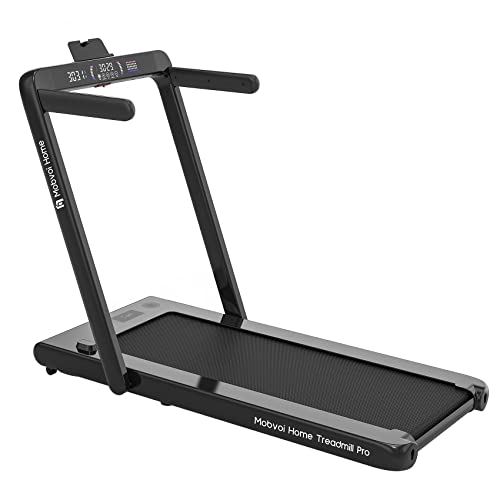The Walking Machine: A Comprehensive Guide to Your Fitness Companion
In today's busy world, where time is a luxury, maintaining a constant exercise regimen can be a challenge. For lots of, a walking machine-- typically known as a treadmill-- functions as a perfect physical fitness buddy. This article offers a thorough take a look at walking machines, including their advantages, types, maintenance tips, and regularly asked concerns.
Why Choose a Walking Machine?
Walking machines provide a practical and efficient method to incorporate cardiovascular workout into day-to-day life. Here are numerous crucial advantages:
- Convenience: Walking machines allow individuals to exercise anytime, regardless of weather or time restraints. They are perfect for hectic schedules.
- Flexibility: Users can walk, jog, or run at their own speed and strength.
- Security: Walking machines provide a lower risk of injury compared to outdoor walking or running, particularly for newbies or those recovering from injuries.
- Tracking Progress: Many treadmills featured built-in displays that track metrics like speed, range, and calories burned.
Types of Walking Machines
When thinking about a walking machine, it's essential to select the best type based upon individual fitness goals and space restraints. Below are the main types of walking machines:
| Type | Description |
|---|---|
| Handbook Treadmills | These machines do not have a motor, and users need to stroll or run to rotate the belt. |
| Electric Treadmills | Powered by an electric motor, enabling users to set the speed and slope easily. |
| Folding Treadmills | Developed for simple storage, these treadmills can be folded up when not in usage. |
| Desk Treadmills | Ideal for a dual work and workout environment, these compact machines permit walking while working. |
| Slope Trainers | These permit users to replicate uphill walking, improving workout intensity and calorie burn. |
Choosing the Right Walking Machine
Picking the best walking machine can significantly affect inspiration and effectiveness. Here are some elements to think about:
Key Features to Look For
- Motor Power: An effective motor makes sure a smooth and constant workout. For Buy Treadmill Online , a 1.5 HP motor is usually adequate; for much heavier use, try to find 3.0 HP and above.
- Belt Size: A broader and longer belt offers more space for a comfy stride. Standard sizes range from 16 inches wide and 50 inches long.
- Slope Options: Adjustable slope settings can imitate walking or running uphill, increasing the intensity of the workout.
- Shock Absorption: Good shock absorption reduces the risk of joint injuries and boosts convenience.
- Console Features: Look for integrated exercises, heart rate screens, and connection features like Bluetooth for a more interesting experience.
Spending plan Considerations
Walking machines can be found in a wide variety of rates, depending upon features and construction quality. Here's a rough budget breakdown:
| Price Range | Features |
|---|---|
| Under ₤ 300 | Fundamental manual or small electric treadmills with restricted functions. |
| ₤ 300 - ₤ 700 | Advanced electric treadmills with slope, medium power motors, and better warranties. |
| ₤ 700 - ₤ 1500 | High-quality electric treadmills with larger built-in displays, extensive features, and warranties. |
| ₤ 1500 and above | High-end models providing advanced innovation, features, and durable building for severe physical fitness enthusiasts. |
Upkeep Tips for Your Walking Machine
To ensure longevity and ideal efficiency of a walking machine, consider the following upkeep pointers:
- Regular Cleaning: Dust and sweat can collect on the machine and the belt. Wipe down the surface areas and tidy the belt regularly.
- Lubrication: Depending on the design, oiling the running belt occasionally can prevent wear and tear. Examine the manufacturer guidelines for suggested lubrication schedules.
- Inspection: Periodically examine the machine for loose screws or worn parts. Tighten and replace as needed.
- Calibration: Occasionally, inspect the calibration of your machine's metrics to ensure they supply accurate information.
- Correct Use: Follow the manufacturer's suggestions for weight limitations and operational standards.
FAQs About Walking Machines
1. Are walking machines an excellent exercise?
Yes, walking machines supply an outstanding cardiovascular exercise, can aid with weight-loss, and improve overall health.
2. How frequently should I use a walking machine?
Go for a minimum of 150 minutes of moderate-intensity aerobic activity each week, which can quickly be achieved with regular sessions on a walking machine.
3. Can I drop weight on a walking machine?
Yes, integrating a walking machine routine into a healthy diet can promote weight reduction, especially if integrated with periods and incline training.
4. Is it safe for senior citizens to use a walking machine?
Yes, walking machines can be safe for seniors with low-impact settings and safety functions like hand rails. Nevertheless, people ought to speak with their health care company before beginning any exercise program.
5. What's the difference between a treadmill and a walking machine?
The term "walking machine" generally describes a treadmill intended for walking, while "treadmill" can refer to machines used for different intensities, including running.
With their versatility and convenience, walking machines can substantially enhance one's physical fitness journey. By thoroughly picking the best type, ensuring proper maintenance, and integrating various workout strategies, users can optimize their walking machine's benefits. As with any exercise program, consistency is crucial to attaining long lasting fitness outcomes.

